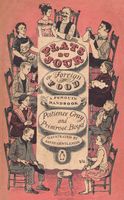Pheasant
By Patience Gray and Primrose Boyd
Published 1957
Pheasants require hanging for a period of some days before their flavour, which is of little consequence when fresh, develops its particular excellence. This only takes place when decomposition is in sight, and as the entrails are first affected the bird must be so hung that its innards do not press upon the flesh of the breast lest it become tainted. It follows that the bird must hang, not from the feet or tail, but from the neck, and in a cool and airy situation. One need not wait for the bird to drop onto the paving of the larder floor; the ripe moment is at hand when the leading tail-feather can be easily plucked from the tail. The period of hanging is naturally conditioned by the weather. The age of a pheasant is read at the wing tip; if the biggest feather is pointed the bird is young, if rounded it is already old.
Become a Premium Member to access this page
Unlimited, ad-free access to hundreds of the world’s best cookbooks
Over 160,000 recipes with thousands more added every month
Recommended by leading chefs and food writers
Powerful search filters to match your tastes
Create collections and add reviews or private notes to any recipe
Swipe to browse each cookbook from cover-to-cover
Manage your subscription via the My Membership page
Monthly plan
Annual plan
In this section
Part of
Advertisement
Advertisement


